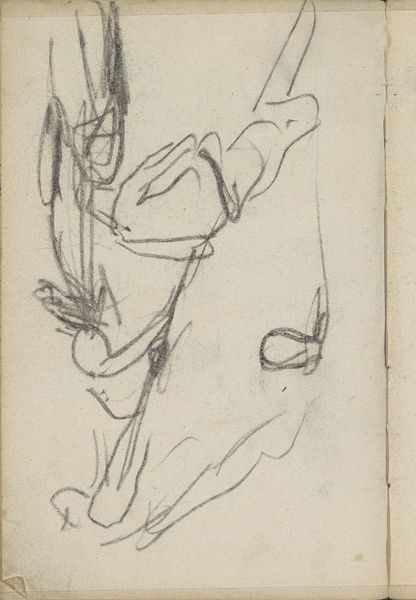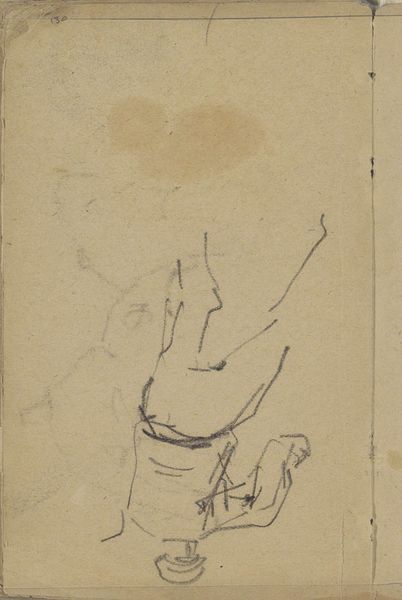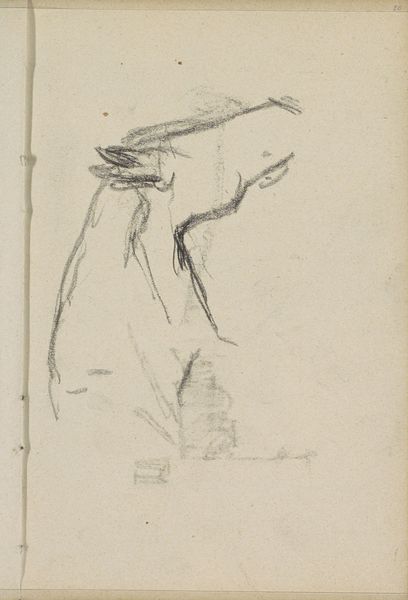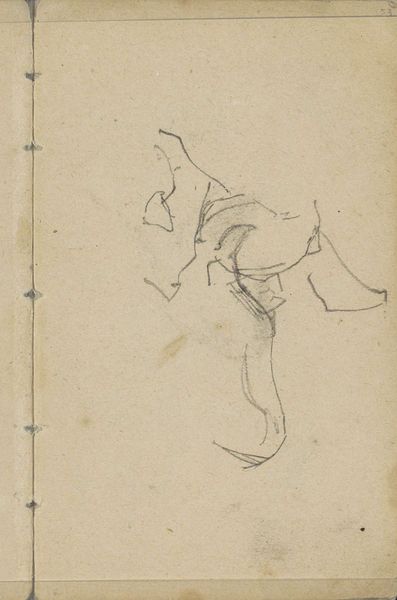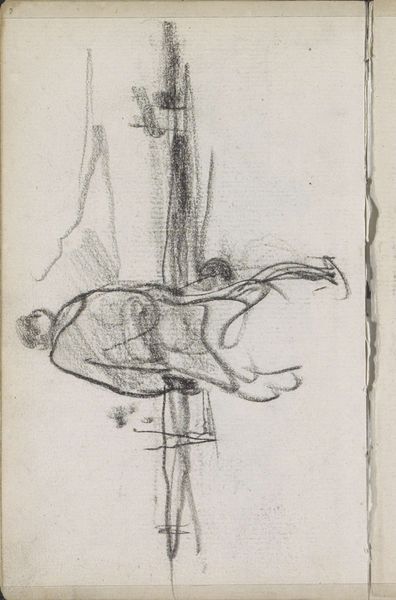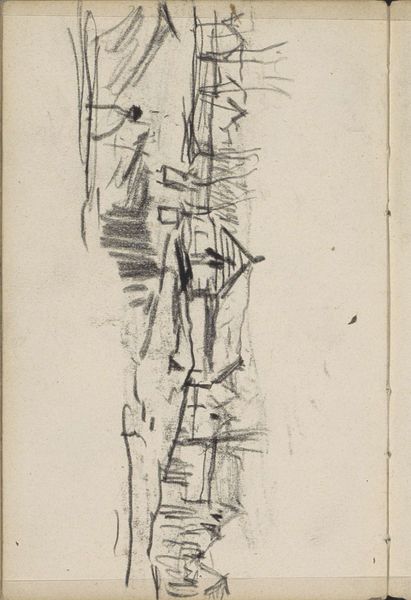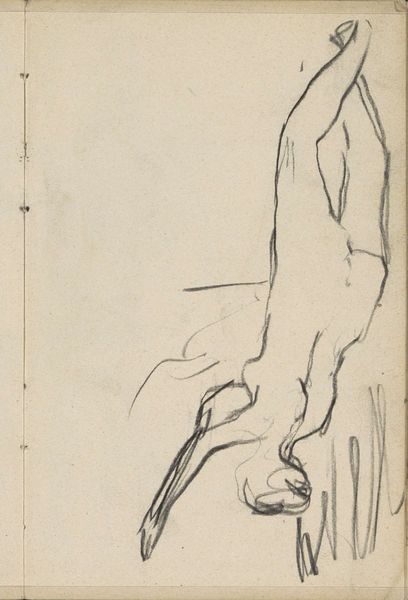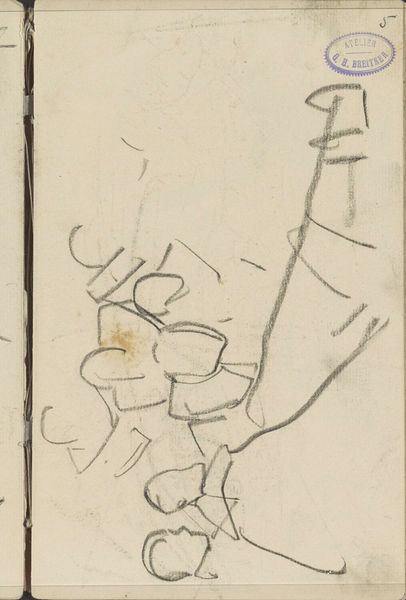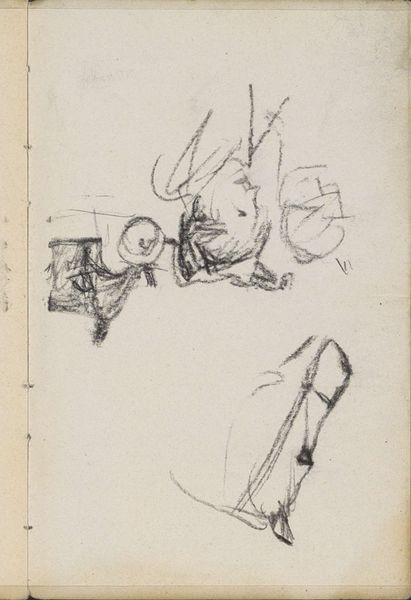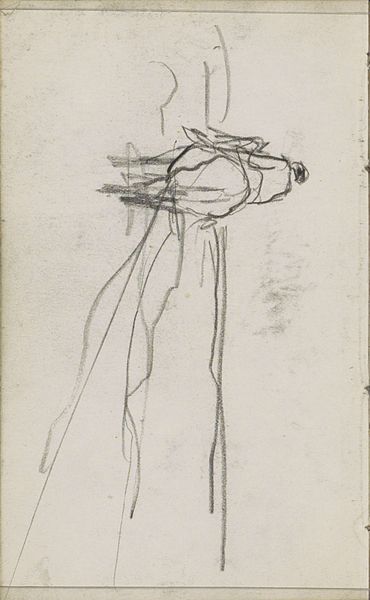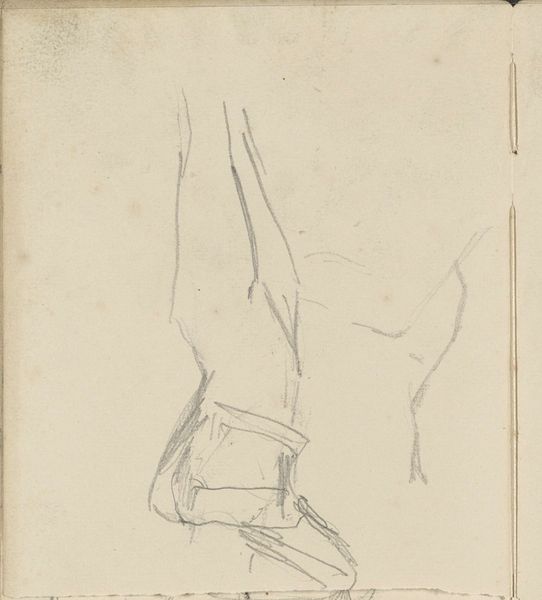
Copyright: Rijks Museum: Open Domain
Curator: Immediately I am struck by the gestural nature of this piece. It feels almost like a fleeting memory. Editor: Exactly. What we are viewing is George Hendrik Breitner’s "Twee vrouwen," which translates to "Two Women," a pencil drawing from around 1907 to 1909. It’s currently housed here at the Rijksmuseum. The Impressionist style captures figures in the rapid movements of everyday life, aiming for raw realism above idealism. Curator: And despite its sparseness, the image radiates an enduring melancholic beauty. Notice how their forms suggest an interior world of their own? They could almost be goddesses in a classical frieze. Editor: Or figures emerging from the urban landscape. Breitner had a distinct style of chronicling working-class women of Amsterdam; these were not idealized representations. The women, if anything, may be reflecting that struggle, captured perhaps at a moment of weary rest. It really challenges social norms through his chosen subjects, no? Curator: Ah, but Breitner also suggests, beyond the individual portrayal, a cultural ideal through a set of references—a quiet dignity in the women's form, perhaps alluding to their own stories that will become integrated with the city’s evolving symbolic lore. He acknowledges something primal about human bonds through the symbol of womanhood, do you agree? Editor: True. This understated representation hints at shared experience through both gesture and expression. What this makes clear is the complex reality of womanhood—particularly working-class existence. Curator: These drawings make me think that, regardless of whether an artist means to create symbols, humans transform them into icons of resilience and even a form of grace. Editor: I am struck that, rather than depicting icons, the drawing seems intent to provoke dialogue and activism around themes of social justice and visibility. The image stays with us. Curator: Absolutely. And by tracing those evolving themes, an art object, as humble as a sketch, starts talking. Editor: Well said! Perhaps we now can start exploring some of Breitner's later work on this subject?
Comments
No comments
Be the first to comment and join the conversation on the ultimate creative platform.
